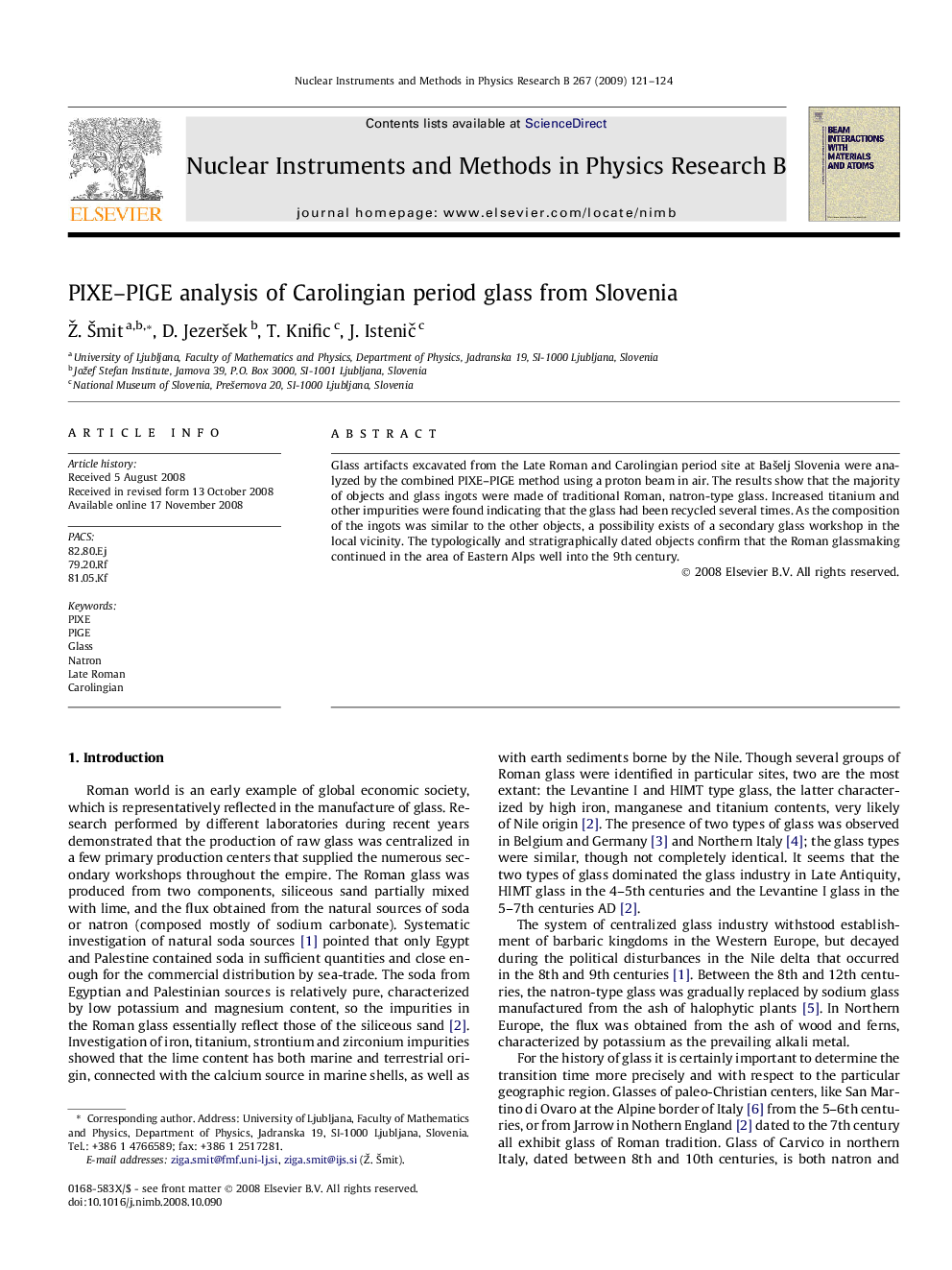| Article ID | Journal | Published Year | Pages | File Type |
|---|---|---|---|---|
| 1684484 | Nuclear Instruments and Methods in Physics Research Section B: Beam Interactions with Materials and Atoms | 2009 | 4 Pages |
Abstract
Glass artifacts excavated from the Late Roman and Carolingian period site at Bašelj Slovenia were analyzed by the combined PIXE–PIGE method using a proton beam in air. The results show that the majority of objects and glass ingots were made of traditional Roman, natron-type glass. Increased titanium and other impurities were found indicating that the glass had been recycled several times. As the composition of the ingots was similar to the other objects, a possibility exists of a secondary glass workshop in the local vicinity. The typologically and stratigraphically dated objects confirm that the Roman glassmaking continued in the area of Eastern Alps well into the 9th century.
Related Topics
Physical Sciences and Engineering
Materials Science
Surfaces, Coatings and Films
Authors
Ž. Šmit, D. Jezeršek, T. Knific, J. Istenič,
